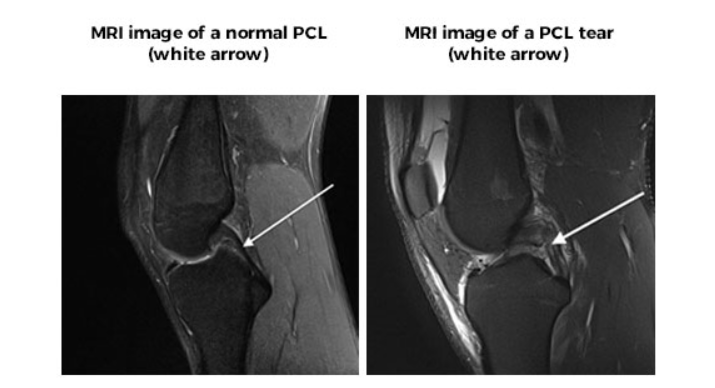By: Geraldus Sigap
Athletic performance is not just about natural talent or rigorous training; it’s also deeply intertwined with the health and functionality of the musculoskeletal system. This is where the fields of orthopedics and sports medicine come into play. While orthopedics focuses on the diagnosis, treatment, and rehabilitation of musculoskeletal injuries and conditions, sports medicine goes a step further by incorporating preventive measures, performance enhancement strategies, and the management of sports-related injuries. The intersection of these two disciplines is crucial for athletes, as it ensures not only their recovery from injuries but also the optimization of their physical abilities, enabling them to perform at their peak.

Figure 1. Sports medicine
One of the key areas where orthopedics intersects with sports medicine is in the rehabilitation process. After an injury, it is not enough to simply heal the damaged tissues; the athlete must also regain their strength, flexibility, and range of motion. Orthopedic rehabilitation programs are designed to address these needs, ensuring that the athlete can return to their sport as quickly and safely as possible. This process often involves a team of healthcare professionals, including orthopedic surgeons, physical therapists, and athletic trainers, who work together to create a comprehensive rehabilitation plan tailored to the athlete’s specific needs and goals.
Injuries to the ACL and PCL are among the most common and severe in athletes, especially those involved in sports that require sudden changes in direction, jumping, or rapid deceleration. These ligaments are crucial for stabilizing the knee joint, and a rupture can lead to significant pain, swelling, and instability. Diagnosing the extent of an ACL or PCL injury is critical for determining the appropriate course of treatment, whether it be surgical or non-surgical.
While X-rays and CT scans are useful for visualizing bones, they fall short when it comes to assessing soft tissues like ligaments. This is where Magnetic Resonance Imaging (MRI) shines, particularly the 3-Tesla (3T) MRI, which provides high-resolution images that can clearly show the condition of soft tissues. A 3T MRI is twice as strong as a standard 1.5T MRI, resulting in sharper, more detailed images that are essential for accurately diagnosing ligament injuries.
For instance, if there is suspicion of an ACL or PCL injury, a 3T MRI can reveal whether the ligament is partially torn, completely ruptured, or simply strained. This level of detail is critical for orthopedic specialists in planning the most effective treatment strategy. The high-resolution images provided by a 3T MRI allow for a clear visualization of the torn ligament, which is crucial for determining whether surgical intervention is necessary or if the injury can be managed through physical therapy and rehabilitation.

Figure 2. MRI image of PCL tear
The intersection of orthopedics and sports medicine represents a collaborative approach to athlete care that is essential for achieving optimal outcomes. While orthopedic surgeons focus on diagnosing and treating injuries, sports medicine specialists work to prevent injuries and enhance performance. Together, these disciplines provide a comprehensive framework for managing an athlete’s health, from the prevention of injuries to the rehabilitation and return to sport. For example, consider an athlete who has suffered a torn ACL (anterior cruciate ligament), one of the most common and serious injuries in sports. The initial treatment would likely involve orthopedic surgery to repair the torn ligament. However, the recovery process does not end with surgery. The athlete would need to undergo a rigorous rehabilitation program, guided by both orthopedic and sports medicine professionals, to regain strength, stability, and confidence in their knee. Additionally, sports medicine specialists might work with the athlete to adjust their training regimen, improve their movement patterns, and implement injury prevention strategies to reduce the risk of re-injury.
This collaborative approach is not only beneficial for athletes who have suffered injuries but also for those looking to enhance their performance. By integrating the expertise of orthopedics and sports medicine, athletes can receive a level of care that addresses both their immediate needs and long-term goals. Whether it’s recovering from an injury, preventing future injuries, or optimizing performance, the intersection of these disciplines provides athletes with the tools and support they need to succeed.
At Abdi Waluyo Hospital, we understand the unique needs of athletes and are committed to providing the highest level of care through our specialized sports medicine and orthopedic services. Our facility is equipped with advanced imaging technology, including 3-Tesla MRI, which is instrumental in diagnosing complex ligament injuries like those affecting the ACL and PCL. With this technology, our orthopedic specialists can provide precise diagnoses that lead to more effective treatment plans, ensuring that athletes receive the care they need to return to their sport as safely and quickly as possible.
Resources
- Orthopaedic and sports medicine rehabilitation – UF Health Jacksonville [Homepage on the Internet]. [cited 2024 Aug 21];Available from: https://ufhealthjax.org/conditions-and-treatments/orthopaedic-and-sports-medicine-rehabilitation
- Mai K, Boldt A, Hau H-M, et al. Immunological Alterations due to Hemodialysis Might Interfere with Early Complications in Renal Transplantation. Anal Cell Pathol Amst 2019;2019:8389765.
- Rivera-Velez SM, Hwang J, Navas J, Villarino NF. Identification of differences in the formation of plasma glycated proteins between dogs and humans under diabetes-like glucose concentration conditions. Int J Biol Macromol 2019;123:1197–1203.
- Complex Ligament Injuries: MCL/PCL Surgeons & Consultants, Yorkshire [Homepage on the Internet]. [cited 2024 Aug 22];Available from: https://yorkshirekneeclinic.com/knee-conditions/complex-knee-ligament-injuries/
